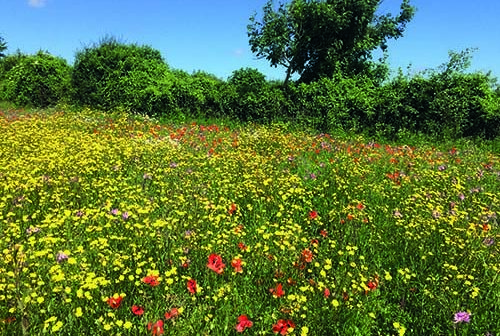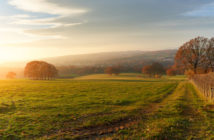Farmers could help threatened bee species and improve crop yields with a new wildflower seed mixes according to a PhD study by Rachel Nichols at the University of Sussex that is supported by the Game & Wildlife Conservation Trust (GWCT). Building on recent studies showing the importance of wild bees, the project teamed up with Emorsgate Seeds© to identity which wildflowers attracted certain bee species in the plots where the wildflower seed is produced. This provided the bees with a super abundance of flowers and so was a very rigorous test of their preferences.
The findings of this landmark study also suggest that the current mixes recommended by Defra might not be as effective as they could be. In fact, the existing nectar flower mix and the flower-rich margin mixes suggested by Defra each contain only one each of the 18 species found to be most attractive in the study. With government policy moving towards a ‘payment by results’ approach, it is important that the options available to farmers are as effective as possible.
As wild bees are often better pollinators than honeybees, the study focused on how best to attract species likely to transfer more pollen per visit. A more diverse mix of pollinator species has also been shown to improve crop yields, encouraging those running the project to find a combination that was attractive to as many different species as possible.
The paper, titled The best wildflowers for wild bees, was published in the Journal of Insect Conservation and Professor John Holland, who is one of the supervisors in the study notes “This work is the first of its kind, but shows how important it is to monitor how effective current measures are. Those mixes used in current agri-environment schemes are having a positive impact, but we must remain open to how we can improve.”
Across the five-month study, Rachel monitored 44 different wildflower species, spotting forty different wild bee species. They were able to identify a combination of 14 wildflowers that supported all but three of these. Some bees were shown to be heavily dependent on certain wildflowers, with almost all of the small garden bumblebee visits observed on kidney vetch. In contrast, more common wild bees such as the red-tailed and buff-tailed bumblebee visited a wide range of flowers, demonstrating a preference for wild knapweed. This illustrates the importance of wildflower diversity in any future seed mixes.The student is currently trialling two new mixes in order to understand how practical it may be to use, both in terms of handling and seed establishment.




